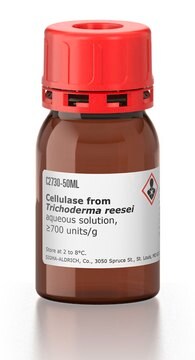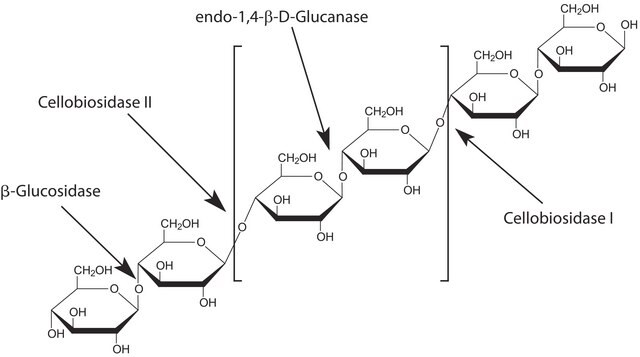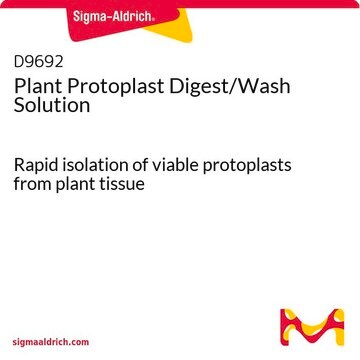C0615
Cellulase from Trichoderma sp.
powder, ≥5,000 units/g solid
Synonym(s):
Onozuka RS
About This Item
Recommended Products
form
powder
Quality Level
specific activity
≥5,000 units/g solid
greener alternative product characteristics
Waste Prevention
Design for Energy Efficiency
Learn more about the Principles of Green Chemistry.
sustainability
Greener Alternative Product
solubility
deionized water: soluble 3.0 mg/mL (Sterile; In the presence of 0.15% polyhexamethylene biguanide (PHMB))
greener alternative category
storage temp.
2-8°C
Looking for similar products? Visit Product Comparison Guide
General description
Application
Biochem/physiol Actions
Unit Definition
Preparation Note
Other Notes
Signal Word
Danger
Hazard Statements
Precautionary Statements
Hazard Classifications
Resp. Sens. 1
Storage Class Code
11 - Combustible Solids
WGK
WGK 1
Flash Point(F)
Not applicable
Flash Point(C)
Not applicable
Personal Protective Equipment
Choose from one of the most recent versions:
Already Own This Product?
Find documentation for the products that you have recently purchased in the Document Library.
Customers Also Viewed
Protocols
To standardize an enzymatic assay procedure of cellulase.
Our team of scientists has experience in all areas of research including Life Science, Material Science, Chemical Synthesis, Chromatography, Analytical and many others.
Contact Technical Service









